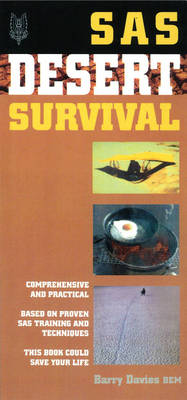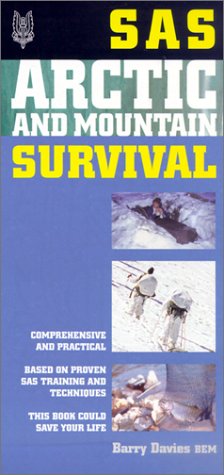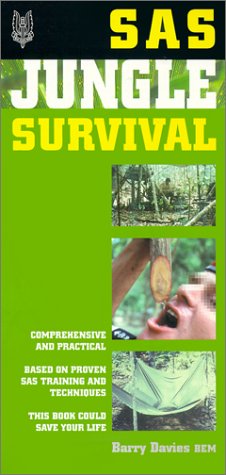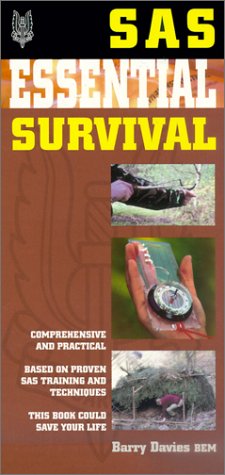SAS Survival
4 total works
As well as a section on basic survival techniques relevant to any hostile environment, this guide offers details pertinent to survival in desert areas. Drawing on practical, first-hand knowledge, entries are arranged in order of survival priority.
It is difficult to imagine how anyone would enter into a polar or mountainous region unprepared. You're prepared for your journey or you arrive by accident; for example, the aircraft you are traveling in has crash-landed over the frozen tundra, or your mode of transport has broken down in the wilderness. In all cases, providing you are uninjured, your chances of survival are good. Planned travel in a cold or mountainous environment should mean that you are well clothed and equipped.
In both winter and summer, the Northern Arctic offers an abundant supply of water and food; shelter can be found or constructed above and below the tree line. The real threat comes from the cold, injury, and simply doing nothing.
During the Second World War a number of service men became marooned in the arctic wasteland-most of them died. They did so because few ventured far from their crash site, they made no attempt to catch fish, hunt game, or even attempt to travel south. None that were later found had prepared a rescue signal, and most had died not from the cold but from starvation.
The SAS Guide to Arctic and Mountain Survival provides details on what to do immediately after your arctic or mountain survival situation has arisen. You will learn how to prepare a shelter, especially on a barren landscape. You will learn how make a fire in the cold and wind, as well as how to find and cook food. This guide provides detailed instructions on navigation, how and when to travel, and how to prepare signal fires that will help speed up your rescue.
In both winter and summer, the Northern Arctic offers an abundant supply of water and food; shelter can be found or constructed above and below the tree line. The real threat comes from the cold, injury, and simply doing nothing.
During the Second World War a number of service men became marooned in the arctic wasteland-most of them died. They did so because few ventured far from their crash site, they made no attempt to catch fish, hunt game, or even attempt to travel south. None that were later found had prepared a rescue signal, and most had died not from the cold but from starvation.
The SAS Guide to Arctic and Mountain Survival provides details on what to do immediately after your arctic or mountain survival situation has arisen. You will learn how to prepare a shelter, especially on a barren landscape. You will learn how make a fire in the cold and wind, as well as how to find and cook food. This guide provides detailed instructions on navigation, how and when to travel, and how to prepare signal fires that will help speed up your rescue.
The SAS Essential Survival guides are a hardworking series of practical survival handbooks based on SAS training and teqniques. They cover every aspect survival in the worlds most inhospitable places, and have the authority of being written by A top ex-SAS training instuctor. Adapted from the comprehensive SAS Encyclopedia of Survival, each book contains information on basic survival techniques, including shelter construction, sourcing, water and signalling-essential skills which are required in any survival situation. SAS Jungle Survival gives detailed information on shelter, food, equipment and firemaking specific to the jungle, any mountain area of your life. Praise for the original hardback SAS Encyclopedia of Survival: 'The most comprehensive survival guide ever written. 'Millitary Illustrated.
The SAS Essential Survival guides are a hardworking series of practical survival handbooks based on SAS training and techniques. They cover every aspect of survival in the world's most inhospitable places and have the authority of being written by a top ex-SAS training instructor. Adapted from the comprehensive SAS Encyclopedia of Survival, each book contains information on basic survival techniques, including shelter construction, sourcing, water and signalling-essential skills which are required in any survival situation. Praise for the original hardback SAS Encyclopedia of survival: 'The most comprehensive survival guide ever written. ' Millitary Illustrated.



